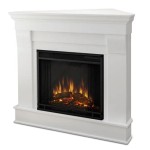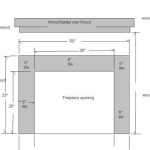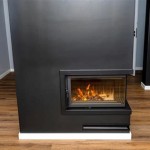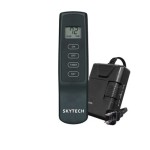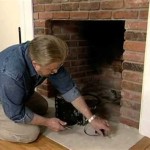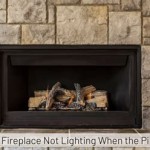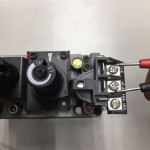Wood Fireplace Grate Blower: Enhancing Fireplace Efficiency and Heat Output
A wood fireplace grate blower is an accessory designed to significantly improve the heating efficiency of a traditional wood-burning fireplace. These devices, typically installed beneath the grate, work by circulating air around and through the fire, distributing the heated air more effectively into the living space. The primary function of a fireplace grate blower is to overcome the inherent limitations of natural convection, the process by which warm air rises and cool air sinks, which can often leave much of the heat generated by a fireplace trapped within the chimney.
Standard fireplaces, without the aid of auxiliary devices, are notoriously inefficient heating sources. A substantial portion of the heat produced escapes up the chimney, particularly in older, less insulated homes. This inefficiency arises from the physics governing air movement and heat transfer. Hot air naturally rises, carrying with it the heat from the fire, while cooler air is drawn in to replace it. This cyclical process, while necessary for combustion, unfortunately results in a significant loss of heat to the external environment.
Fireplace grate blowers address this problem by forcibly circulating air. The blower draws cool air from the room, passes it through or around the hot embers and logs, and then expels the now-heated air back into the room. This forced convection significantly increases the amount of heat transferred from the fire to the room, minimizing the heat lost up the chimney. The result is a more consistent and comfortable room temperature, and a reduction in reliance on alternative heating systems.
Understanding the Mechanics of Fireplace Grate Blowers
Fireplace grate blowers generally consist of a fan or blower unit, a housing to contain the unit, and a power cord. Many models incorporate a thermostat to automatically regulate the blower's operation based on the temperature of the fire. When the fire reaches a certain temperature, the thermostat activates the blower; conversely, when the fire diminishes and the temperature drops, the thermostat deactivates the blower.
The fan or blower itself is typically a centrifugal or axial fan. Centrifugal fans, also known as squirrel cage fans, are known for their ability to move air against high static pressure, making them suitable for forcing air through the narrow spaces beneath the grate. Axial fans, on the other hand, are generally more efficient at moving larger volumes of air but may be less effective at overcoming resistance. Some higher-end models utilize variable-speed blowers, allowing the user to adjust the airflow and noise level.
The housing of the blower is usually constructed from metal, often steel or aluminum, to withstand the high temperatures generated by the fireplace. The design of the housing is crucial for directing airflow efficiently and preventing damage to the blower motor. The housing may also incorporate features such as vibration dampeners to reduce noise and extend the lifespan of the blower.
The power cord connects the blower to a standard electrical outlet. The power consumption of fireplace grate blowers is generally low, typically ranging from 20 to 100 watts. Some models are equipped with a surge protector to protect the blower from voltage spikes. It's crucial to use a blower with a properly grounded outlet and to follow the manufacturer's safety instructions to prevent electrical hazards.
Advantages of Using a Fireplace Grate Blower
The primary advantage of using a fireplace grate blower is improved heating efficiency. By circulating air around the fire, the blower extracts more heat from the burning wood, directing it into the room rather than allowing it to escape up the chimney. This can lead to a significant reduction in heating costs, especially in homes that rely heavily on fireplaces for supplemental heating.
Another advantage is more even heat distribution. Without a blower, the heat from a fireplace tends to concentrate near the fireplace itself, leaving other parts of the room cooler. A blower helps to circulate the heated air throughout the room, creating a more uniform and comfortable temperature. This is particularly beneficial in larger rooms or open-concept living spaces.
Reduced wood consumption is a further benefit. Because the blower improves the efficiency of heat transfer, the fireplace can generate more heat with less wood. This can translate into significant savings on firewood costs over time. It also reduces the environmental impact associated with burning wood, such as emissions of particulate matter and greenhouse gases.
Furthermore, some users report a noticeable decrease in the occurrence of cold drafts. By actively moving air, the blower helps to counteract the natural draft that pulls cold air in through windows and doors. This can make the room feel warmer and more comfortable, even in periods of extremely cold weather.
Finally, ease of installation and use is a major factor. Most fireplace grate blowers are designed to be easily installed without professional assistance. The blower simply sits beneath the grate and plugs into a standard electrical outlet. The thermostat, if present, automatically regulates the blower's operation, requiring minimal user intervention.
Factors to Consider When Choosing a Fireplace Grate Blower
The size and configuration of the fireplace are crucial considerations when selecting a fireplace grate blower. The blower must fit comfortably beneath the grate and allow for sufficient airflow around the fire. The dimensions of the fireplace opening and the height of the grate should be carefully measured to ensure proper fit. Some manufacturers offer adjustable blowers that can be customized to fit a variety of fireplace sizes.
Blower capacity, measured in cubic feet per minute (CFM), is a critical performance metric. A higher CFM rating indicates that the blower can move more air, which is generally desirable for larger rooms or fireplaces with high heat output. However, a blower with excessive CFM can also create unwanted drafts or noise. It is essential to strike a balance between airflow and noise level.
Noise level is another important factor to consider. Fireplace grate blowers can produce a noticeable amount of noise, particularly at higher speeds. Some blowers are designed with noise-dampening features to minimize noise pollution. It is advisable to read reviews and compare noise ratings before purchasing a blower. Models with variable speed controls offer the ability to adjust airflow and noise level to suit individual preferences.
Durability and build quality are essential for long-term performance. The blower should be constructed from high-quality materials that can withstand the high temperatures and harsh conditions within a fireplace. Look for blowers with metal housings, robust fan blades, and reliable motors. A longer warranty period is often an indicator of higher quality and durability.
Thermostat control is a desirable feature for many users. A thermostat automatically regulates the blower's operation based on the temperature of the fire, eliminating the need for manual adjustments. This can improve convenience and efficiency. Some thermostats also include adjustable temperature settings, allowing the user to fine-tune the blower's performance.
Finally, energy efficiency should be considered. While most fireplace grate blowers consume relatively little power, it is still prudent to choose a model with an energy-efficient motor. This can minimize energy consumption and reduce operating costs over time. Look for blowers with energy-saving certifications or labels.
Proper installation and maintenance are essential for ensuring the safe and efficient operation of a fireplace grate blower. The blower should be installed according to the manufacturer's instructions, ensuring that it is properly positioned beneath the grate and that the power cord is routed safely away from the fire. Regular cleaning of the blower and surrounding area is necessary to prevent the buildup of dust and debris, which can reduce airflow and increase the risk of overheating.

5 Tube Grate Heater Wood Burning Fireplaces

Learn More About The Diffe Styles Of Fireplace Grate Heaters

4 Tube Grate Heater Wood Burning Fireplaces

Grate Heater Wikipedia
Fireplace Heater 5 Tube W Blower

Tube Fireplace Grate Heater For Zc Fireplaces

Spitfire Tube Fireplace Heaters Heater Blower Heating And Plumbing

Grate Heater With Masonry Fireplace Doors Customized

5 Tube Fireplace Grate Heater For Zero Clearance Fireplaces

Fireplace Efficiency Blowers And Why You Should Have One
Related Posts


